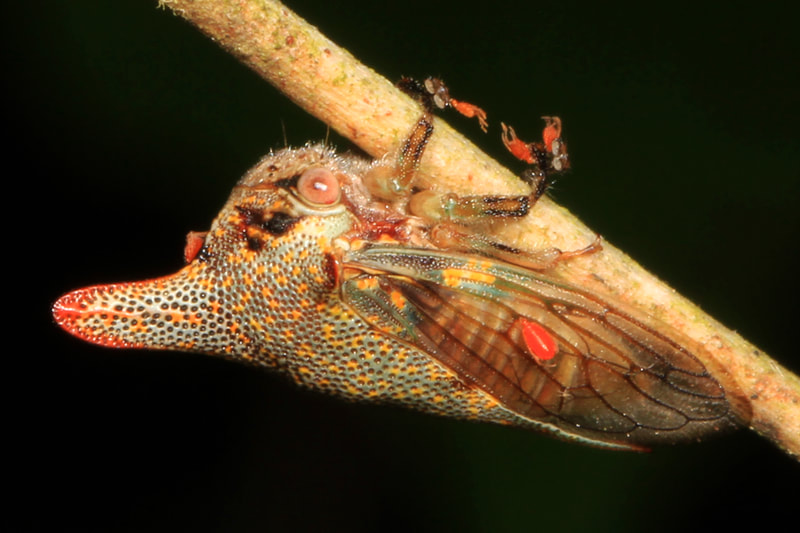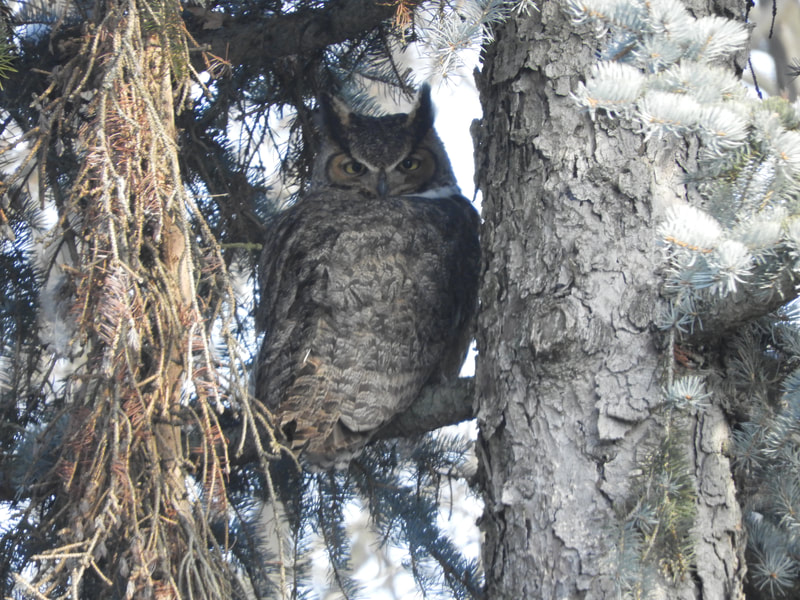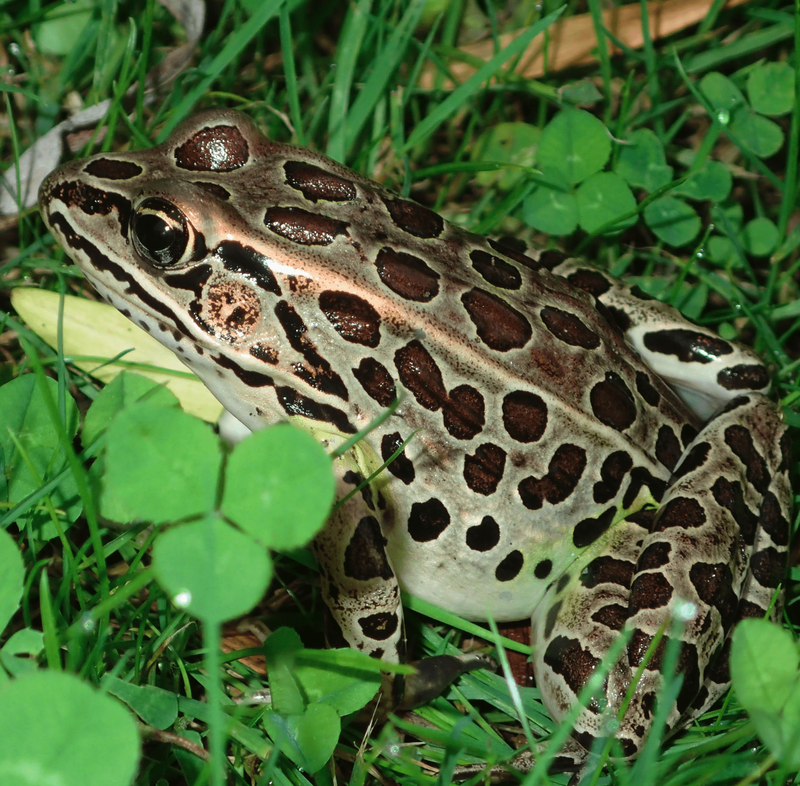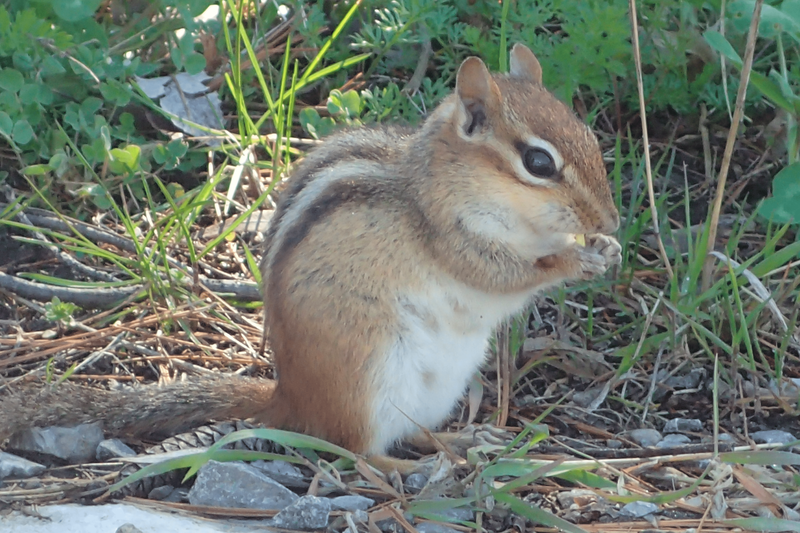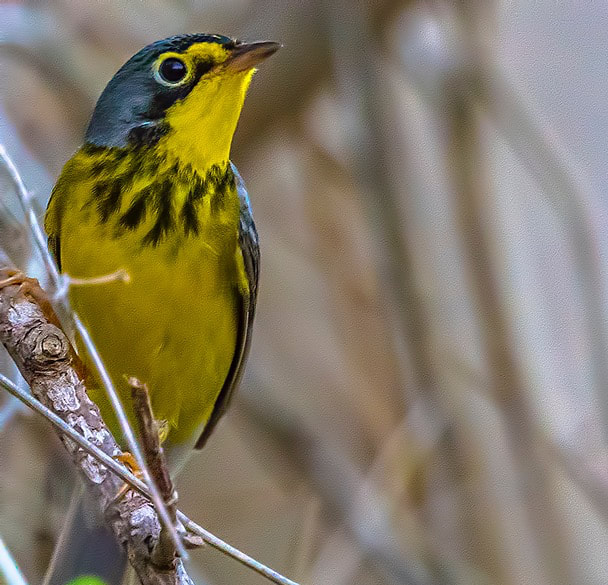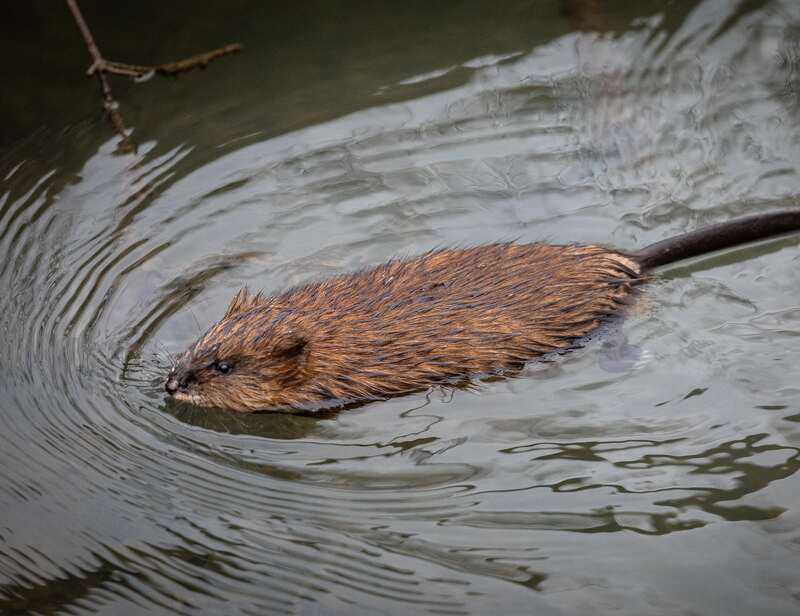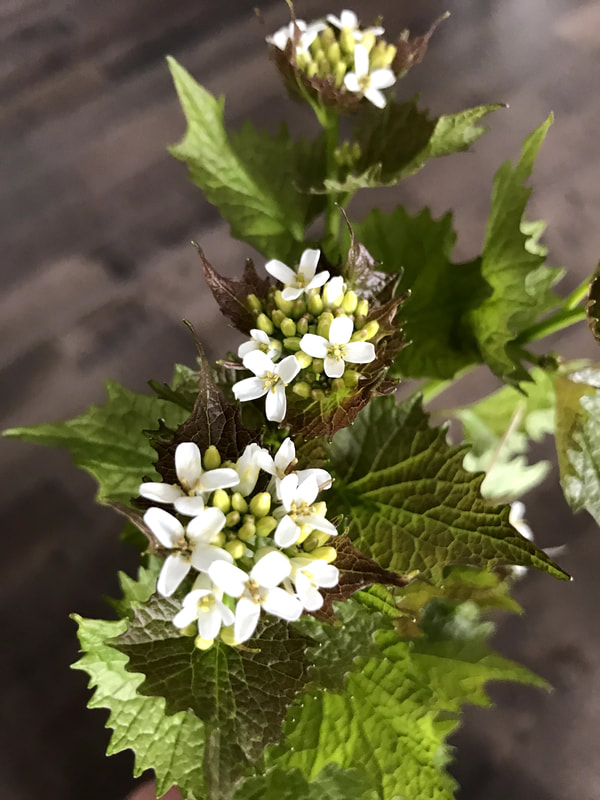|
This background information illustrates the benefits of growing native trees to mitigate climate change and boost biodiversity. The objective of this project is for students to learn how to grow native trees from seeds to saplings and to identify invasive plants. Students then take action to increase the quality of local ecosystems by planting the native trees they grow.
|
Why are trees important?
Trees are important because they use the energy of the sun to transform water, nutrients and carbon dioxide into clean air, oxygen, wood and food. Trees, like all plants, are the foundation of our existence and humans cannot exist without them.
They offer, among many other benefits, shade and habitat including food, nesting sites, and shelter for insects, birds, mammals and reptiles. Visit The National Wildlife Federation's page to learn more on how trees make a difference.
They offer, among many other benefits, shade and habitat including food, nesting sites, and shelter for insects, birds, mammals and reptiles. Visit The National Wildlife Federation's page to learn more on how trees make a difference.
Mitigating The climate emergency
In 2020, the government of Canada announced a plan to plant 2 billion trees in 10 years. This plan is an integral part of the overall solution to fight the climate emergency.
How do trees help to fight the climate emergency and contribute to the environment?
Trees help address the climate emergency because of how they get their energy. They use one of the most important chemical reactions on Earth - photosynthesis - which takes place in green leaves:
The equation for photosynthesis using chemical symbols:
Photosynthesis is part of the carbon cycle. The carbon cycle shows how carbon moves throughout the Earth's systems. The problem is, the cycle is out of balance. People have taken too much carbon from the Earth (fossil fuels) and released it into the atmosphere (CO2). But if we stop taking fossil fuels out of the ground and help trees thrive, the carbon cycle can begin to rebalance.
In the last century, humans have burned huge amounts of oil and gas, known as fossil fuels, releasing vast amounts of carbon dioxide into the air.
This extra carbon dioxide in the atmosphere traps heat which causes the climate to change, resulting in extreme, damaging weather and the melting of the ice caps. These changes threaten life on Earth, including human beings. Some governments and scientific organizations have started to call climate change (also known as global warming) a “climate emergency” to recognize the need to take action to stop the climate from changing further.
Mature forests have historically played an important role in maintaining healthy, natural levels of carbon dioxide and oxygen in the air. Each plant, from the mightiest oak to the tiniest floating green phytoplankton in the ocean, absorbs carbon dioxide. By planting trees, you are helping to tackle the climate emergency.
SuSTaining Biodiversity
Biodiversity refers to the incredible variety of life on earth. Biodiversity can exist at the level of genes, species, and ecosystems. All of these animals need native plants to thrive in the wild. Click on each animal to find out more.
Photography by Andrew Budziak, Dan Turko, and Judy Gallagher.
Photography by Andrew Budziak, Dan Turko, and Judy Gallagher.
What is Happening in Toronto?
Toronto has the most extensive ravine system of any large city in the world and is home to one of the largest urban forests.
Over the last decade many native tree species have been replaced by invasive trees. This threatens the ravine's overall health and sustainability. One example of an invasive tree is the Norway maple (Acer platanoides) which displaces native trees such as the sugar maple (Acer saccharum) and northern red oak (Quercus rubra). A recent study conducted by the Faculty of Forestry at the University of Toronto showed that in 1977, only 10% of the ravine's green canopy consisted of Norway maple trees. By 2017 it had increased to 40%.
Other very aggressive invasive plants are dog-strangling vine (Cynanchum rossicum), Japanese knotweed (Fallopia japonica) and garlic mustard (Alliaria petiolata).
Over the last decade many native tree species have been replaced by invasive trees. This threatens the ravine's overall health and sustainability. One example of an invasive tree is the Norway maple (Acer platanoides) which displaces native trees such as the sugar maple (Acer saccharum) and northern red oak (Quercus rubra). A recent study conducted by the Faculty of Forestry at the University of Toronto showed that in 1977, only 10% of the ravine's green canopy consisted of Norway maple trees. By 2017 it had increased to 40%.
Other very aggressive invasive plants are dog-strangling vine (Cynanchum rossicum), Japanese knotweed (Fallopia japonica) and garlic mustard (Alliaria petiolata).
Why are Invasive plants a threat to biodiversity?
The amount of biodiversity in a habitat is a key indicator of its health. Increased biodiversity means more resilience against pests, climate change and invasive species. Invasive plants are plants introduced by humans to a new area that spread aggressively and harm the existing life in that region. Invasive plants pose the second biggest threat to biodiversity loss worldwide, surpassed only by habitat loss.
While all species benefit from a thriving ecosystem, human beings themselves enjoy free benefits from a healthy environment. These benefits are called ecosystem services. Examples include air purification, water filtration, flood prevention, reduction in erosion, soil building, providing food, shade, building materials and essential medicinal compounds. Many recent studies also show that the simple act of walking through a forest can have noticeable positive physical and mental health effects on a person.
Indigenous peoples around the world emphasize that we as human beings are a part of nature - not apart from it - and we must do our part to help protect, sustain, restore and create healthy functioning ecosystems.
Native plants form the base of the food pyramid in any biodiverse ecosystem. Native plants have co-evolved with insects, birds and other wildlife for millennia. This has created a system of relationships that stabilize and balance the ecosystem. Research by Doug Tallamy, a professor of Entomology and Wildlife Ecology, revealed that in order to sustain our bird population we need to have a minimum of 70% native plants in our landscape. Check out Doug Tallamy's educational and fun presentation that further explains how native plants sustain biodiversity.
In many Canadian forests, oak trees (the Ojibwe name for them is mitigomizh) are an especially important type of native tree. They can support up to 4000 different kinds of insects and other animals - Nature’s super heroes! Northern red oaks (wiisagi-mitigomizh) can reach heights of over 20 meters and can live up to 400 years. The oldest northern red oak in Toronto is about 300 years old! Oaks are huge trees that support a large food web and provide shelter year round.
Crotches (where tree branches meet) provide raptors such as sharp-shinned hawks, red-tailed hawks and great horned owls a place to build nests. Tree cavities of various sizes are used by many animals including woodpeckers, raccoons and small mammals as shelter. Lichens and occasionally moss can be found on the bark of oak trees.
The acorns of the northern red oak are plentiful and high in calories. Many species such as wood duck, ruffed grouse, red bellied woodpecker, blue jay, tufted titmouse, eastern chipmunk, fisher, gray fox, squirrel, opossum, white-tailed deer, raccoon and black bear feed on acorns.
The leaves of oaks can support over 500 different species of moth and butterfly caterpillars. Caterpillars perform a vital role in many ecosystems. They transform plant material into protein that is an essential food source for 95% of birds. Over millions of years of evolution, caterpillars have developed ways to eat plants like oaks that have chemical defences. This evolutionary adaptation mechanism is called "host plant specialization". However, most caterpillars are not able to deal with the chemical defences of introduced ornamental and invasive plants, since the caterpillars and the new plant species did not evolve together. Caterpillars need oaks and other native trees, and the entire food web needs caterpillars.
Despite providing a green appearance to the landscape, invasive plants cannot provide food for native wildlife because they are not part of the same ancient and complex native food web. Their increasing dominance in many ravines and natural areas decreases biodiversity and with it the number and variety of native plants, amphibians, reptiles, soil organisms, birds, mammals, insects and other invertebrates.
While all species benefit from a thriving ecosystem, human beings themselves enjoy free benefits from a healthy environment. These benefits are called ecosystem services. Examples include air purification, water filtration, flood prevention, reduction in erosion, soil building, providing food, shade, building materials and essential medicinal compounds. Many recent studies also show that the simple act of walking through a forest can have noticeable positive physical and mental health effects on a person.
Indigenous peoples around the world emphasize that we as human beings are a part of nature - not apart from it - and we must do our part to help protect, sustain, restore and create healthy functioning ecosystems.
Native plants form the base of the food pyramid in any biodiverse ecosystem. Native plants have co-evolved with insects, birds and other wildlife for millennia. This has created a system of relationships that stabilize and balance the ecosystem. Research by Doug Tallamy, a professor of Entomology and Wildlife Ecology, revealed that in order to sustain our bird population we need to have a minimum of 70% native plants in our landscape. Check out Doug Tallamy's educational and fun presentation that further explains how native plants sustain biodiversity.
In many Canadian forests, oak trees (the Ojibwe name for them is mitigomizh) are an especially important type of native tree. They can support up to 4000 different kinds of insects and other animals - Nature’s super heroes! Northern red oaks (wiisagi-mitigomizh) can reach heights of over 20 meters and can live up to 400 years. The oldest northern red oak in Toronto is about 300 years old! Oaks are huge trees that support a large food web and provide shelter year round.
Crotches (where tree branches meet) provide raptors such as sharp-shinned hawks, red-tailed hawks and great horned owls a place to build nests. Tree cavities of various sizes are used by many animals including woodpeckers, raccoons and small mammals as shelter. Lichens and occasionally moss can be found on the bark of oak trees.
The acorns of the northern red oak are plentiful and high in calories. Many species such as wood duck, ruffed grouse, red bellied woodpecker, blue jay, tufted titmouse, eastern chipmunk, fisher, gray fox, squirrel, opossum, white-tailed deer, raccoon and black bear feed on acorns.
The leaves of oaks can support over 500 different species of moth and butterfly caterpillars. Caterpillars perform a vital role in many ecosystems. They transform plant material into protein that is an essential food source for 95% of birds. Over millions of years of evolution, caterpillars have developed ways to eat plants like oaks that have chemical defences. This evolutionary adaptation mechanism is called "host plant specialization". However, most caterpillars are not able to deal with the chemical defences of introduced ornamental and invasive plants, since the caterpillars and the new plant species did not evolve together. Caterpillars need oaks and other native trees, and the entire food web needs caterpillars.
Despite providing a green appearance to the landscape, invasive plants cannot provide food for native wildlife because they are not part of the same ancient and complex native food web. Their increasing dominance in many ravines and natural areas decreases biodiversity and with it the number and variety of native plants, amphibians, reptiles, soil organisms, birds, mammals, insects and other invertebrates.
Read more on the effect of invasive Norway maple trees on local forests in these Globe and Mail articles:
"Mistaken Identi-tree" by Peter Kuitenbrouwer
"How the Norway maple is changing the fall palette" by Eric Andrew Gee
"Mistaken Identi-tree" by Peter Kuitenbrouwer
"How the Norway maple is changing the fall palette" by Eric Andrew Gee
COmmon INvasive plants
How Can You Help?
You can learn to grow a native tree from its seed and plant it in the ground. We need native plants to replace the more harmful invasive ones and to absorb carbon dioxide from the atmosphere to combat climate change. Click the button below to get started on growing your very own native tree!
Teachers - we are here for you!
Click the button below to go to our information page for teachers. We help you plan out your year, get the necessary materials, and provide discussion questions. If you want additional support, please email us at: s2scanada@seedstosaplings.ca









